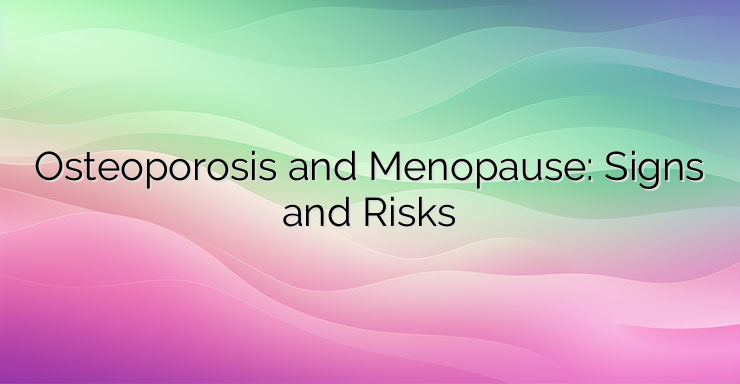Why is osteoporosis associated with menopause? There is a direct link between lower estrogen levels during the premenopausal period and menopause itself, and the development of osteoporosis. Early menopause – before the age of 45, and any prolonged periods when hormone levels are low and periods are absent or irregular – can cause bone loss. What are the symptoms of osteoporosis? Osteoporosis is called a “silent disease” because initially bone loss occurs without symptoms. Patients may not know they have osteoporosis until their bones become so affected that a sudden strain, bump, or fall can cause a fracture of a vertebra or long bones. The disturbed structure of the vertebrae in a more advanced stage can manifest itself with severe back pain, a decrease in height, a change in the posture of the back and spinal deformities. What are the risk factors for osteoporosis? Age – after reaching maximum bone density and strength – usually around age 30, bone mass begins to naturally gradually decrease with age. Gender – women over the age of 50 have the greatest risk of developing osteoporosis. In fact, women are four times more likely to develop osteoporosis. Women’s lighter, thinner bones and longer life expectancy explain some of the reasons why they are at higher risk of developing osteoporosis. Bone structure and body weight – lower body weight is associated with a higher risk of developing osteoporosis. Family history – heredity is one of the most important risk factors for developing osteoporosis. In the presence of relatives with signs and manifestations of osteoporosis – for example, a fracture of the femur after a slight fall, the risk of developing the disease is higher. Previous history of fracture – breaking a bone; Taking certain medications – Certain medications, such as long-term use of steroidal anti-inflammatory drugs, can also increase the risk of developing osteoporosis. Certain diseases, including cancer and stroke, can increase the risk of osteoporosis. How do we know if we have osteoporosis? Bone health can be tracked through bone mineral density tests – BMD or otherwise known as bone measurements. For the purposes of the study, X-rays are used, which include very small amounts of radiation to determine the strength of the bones. The bone mineral density test is suitable for: Women aged 65 and over; Women with multiple risk factors and family history; Menopausal women who have had fractures; References: https://www.webmd.com/menopause/guide/osteoporosis-menopause


Leave a Reply